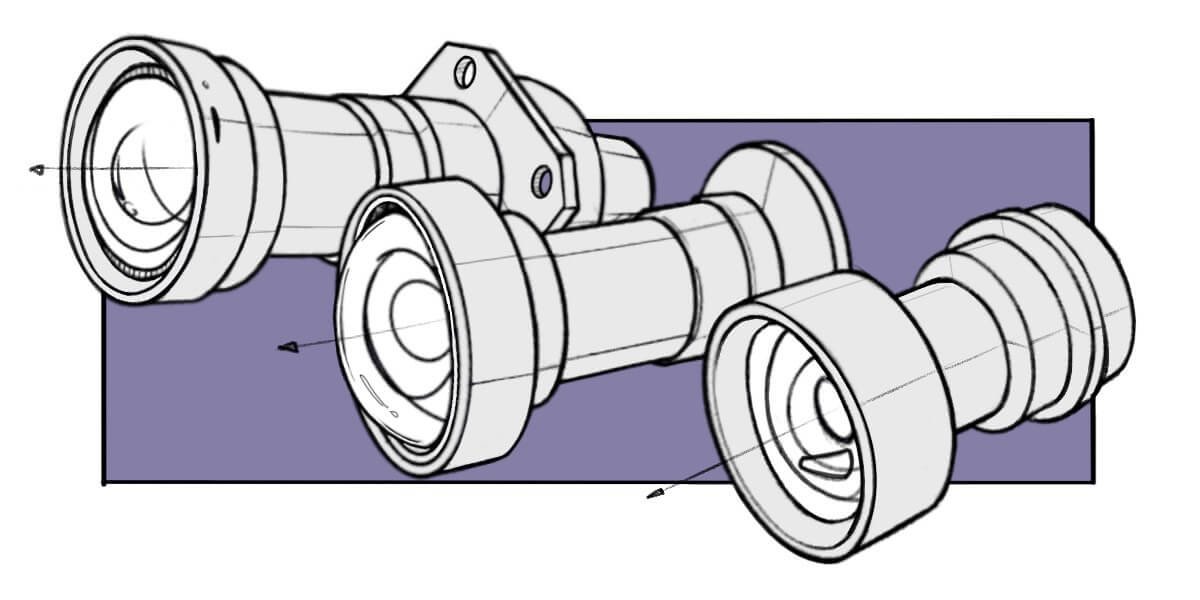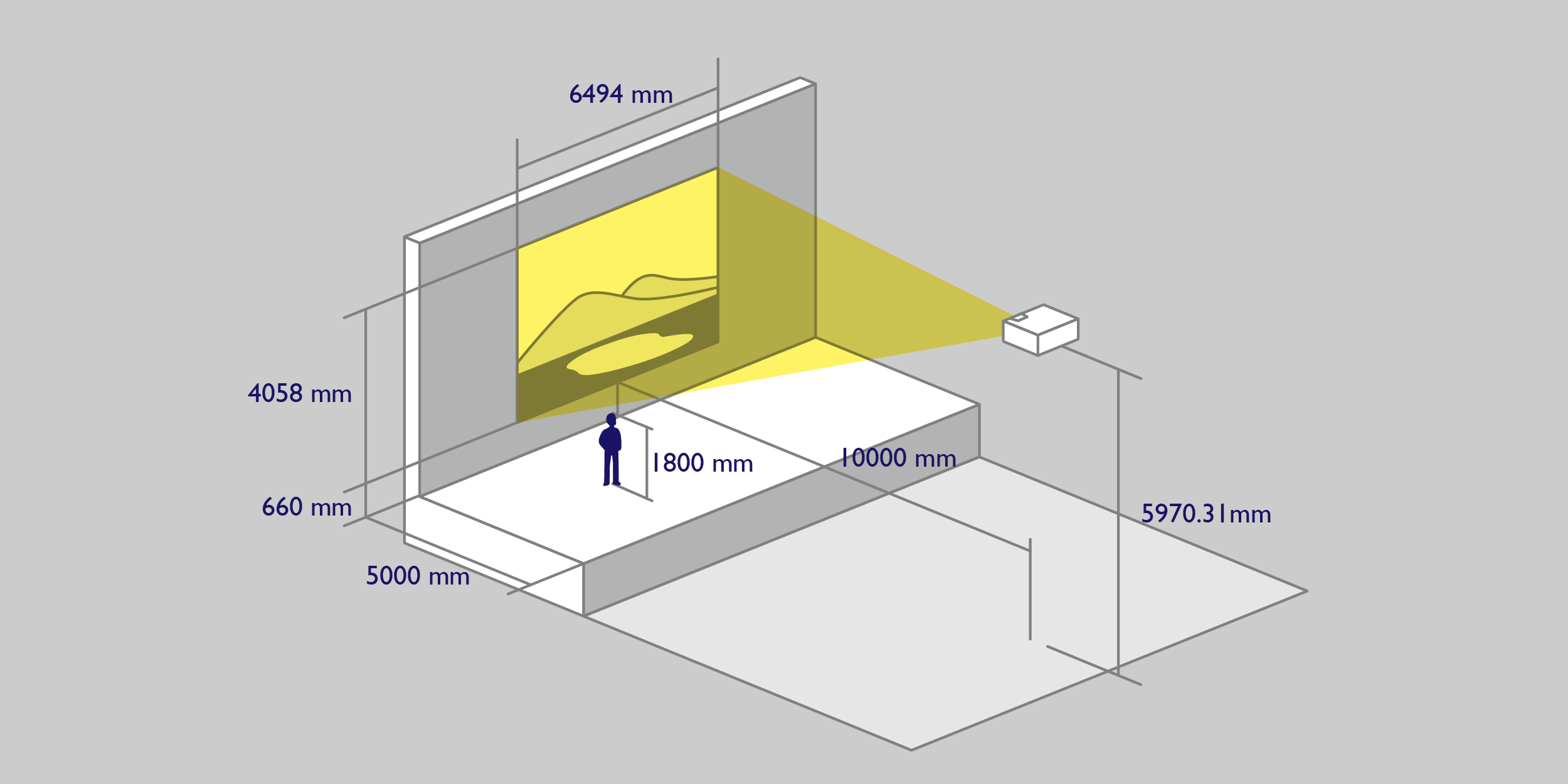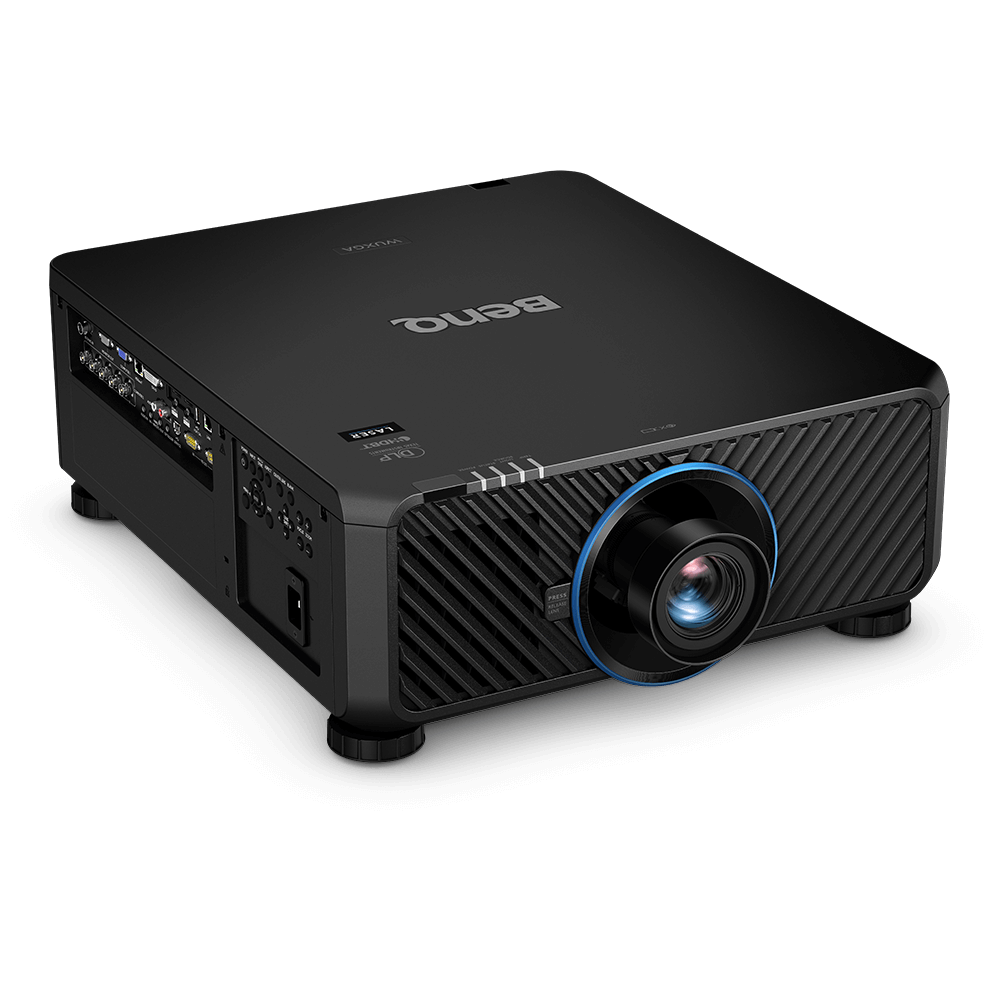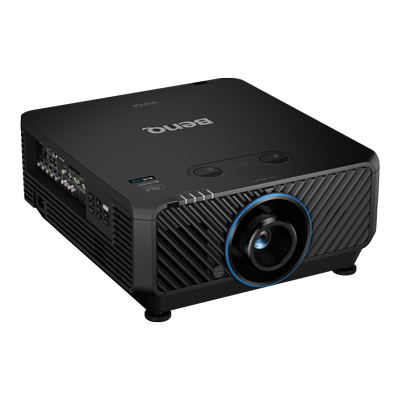Optional Lenses for Large Venue Projectors
- BenQ
- 2020-04-30
When designers and visual artists imagine works that involve spaces where the audience not only experiences their designs but also engages with it in a meaningful way, they tend to think with a boundless energy that sees no limits to what they can conceive. Whether it be an interactive exhibit or a large-scale business presentation, many of these designs rely on the use of large-venue projectors to produce the images that are the crux of their designs.
With a countless number of considerations to take into account, including the layout of the design, site limitations, and the nature of presentation, the system integrators responsible for making the designs a reality need large-venue projectors that can deal with these concerns and ensure a seamless execution of the designer’s vision. A way for these large-venue projectors to be able to meet these needs is with their use of optional lenses. This is because optional lenses give large-venue projectors the flexibility to deal with some of the spatial constraints described above.
In this article we will explore this issue by answering the following questions:
• What are large venue projectors? What are optional lenses?
• Why are optional lenses necessary for executing designs that use large venue projectors?
• What makes BenQ’s optional lenses the ideal solution?
What are large venue projectors? What are optional lenses?
Large venue projectors are commercial projectors geared towards use in large venues such as exhibit halls, auditoriums, and public spaces, as opposed to the consumer projectors used in home theaters and small meeting rooms. Because of their nature, large venue projectors tend to have top-end specifications with very high brightness values (with a range of up to 30,000 ANSI lumens or more), and more importantly they feature the use of optional lenses.

Unlike normal consumer projectors, large venue projectors do not feature built-in lenses, instead large venue projectors feature compartments that allow you to install separate interchangeable lenses, or “optional lenses”, lenses whose specifications, particularly throw ratio and lens shift, can vary.
Why are optional lenses necessary for executing designs that use large venue projectors?
How all of this applies to the discussion in the beginning of this article is that by using optional lenses large venue projectors can change-up things like throw ratio (the ratio of the distance from the lens to the screen to the screen width) and lens shift (the ability to adjust the direction of the lens), instead of having them be set because of a fixed lens. This means that if a large venue projector is being used in a space that requires a long throw ratio it can attach an optional lens with corresponding specifications, then when the same projector is used in a smaller, tighter space it can change its lens to one with a shorter throw ratio. This is the above-mentioned flexibility which system integrators are looking for.
To make these ideas more concrete we will explore two separate scenarios that exemplify the need for optional lenses: one a conference hall presentation with a single projector, and the other a video wall exhibit utilizing multiple projectors.
Scenario 1: Conference Hall Presentation
In this scenario a speaker is making a presentation to a large audience, as seen in the image below. Regardless of whether the site is custom-designed or a pre-existing space, this is a scenario where the projector needed for the presentation can only be installed in a certain location while the screen used for the projection is a defined size. This then sets limits on both the projection distance and the screen width, or in other words the throw ratio. Similarly, the projector’s projection angle will entirely depend on things like the position of the speaker and whether or not a stage is present.

If you imagine using a projector with a built-in lens in this type of scenario, the system integrator would have to procure a projector with a throw ratio and lens shift capability that matches the conditions of the presentation for each and every setting. By using a large venue projector with optional lenses instead, the system integrator can just switch to a lens with matching specs depending on the situation.
Scenario 2: Video Wall Exhibit
In this scenario an image is projected across a wall whose nature requires multiple projectors each projector projecting sections of the image to form a whole. Furthermore, in order to ensure that things like the color, contrast, and sharpness of each projected image are in sync so that each section blends seamlessly into the other, each projector must be of the same model.

With this setup each projector must be placed at different heights/positions to avoid a projector obstructing the image from another projector. This then varies the projection distance and angle for each projector, which would then require that each projector feature different throw ratios and lens shifting capabilities. Given that in this type of setup each projector is of the same model, as explained above, fulfilling this requirement is something which only optional lenses can do.
What makes BenQ’s optional lenses the ideal solution?
Understanding that only optional lenses make it possible for large venue projectors to perfectly execute a designer’s vision, what makes BenQ’s optional lenses the ideal solution for your projection needs
There are two key reasons why BenQ’s optional lenses stand above the lenses from other brands:
• BenQ’s optional lenses utilize glass lenses. Plastic lenses, because of their nature, tend to expand as a result of the high-temperature levels that large venue and high-end projectors produce. This in turn causes the projected image to distort and become out of focus the longer the image is projected. This is not the same for glass lenses, whose durability and temperature resistance prevents any of these issues.
• BenQ’s optional lenses cover the whole spectrum of needs. Whereas other brands might only have a small selection of optional lenses that cover only a patchwork of throw ratio and lens shift specifications, BenQ offers a full array of optional lenses for each of our large venue projectors covering the whole spectrum of specifications needed.
Further Reading
-
Trends & Knowledge
Shopping for a New Large Venue Projector? Consider Laser Projection
Research shows that nearly 2/3 of event hosts strongly consider projection and display capabilities when choosing a venue. A modern venue needs to have strong projection capabilities that will satisfy event hosts who require great color and image quality.
2019.04.18 -
Trends & Knowledge
4 Ways to Facilitate Awe-Inspiring Museum Displays through BenQ’s BlueCore Laser Projectors
2018.09.18 -
Trends & Knowledge
DLP or 3LCD Projectors for Large Venues? The Difference is Dustproof Technology
BenQ is the world’s #1 DLP projector manufacturer. To achieve further advances in projector image quality, stability, and reliability, BenQ has been focusing on dustproof technology.
2019.07.02 -
Trends & Knowledge
A Buyer’s Guide to Business Projectors. Knowing the Specs to Choose the Ideal Business Projector
A buyer’s guide to business projectors. Know the specs to choose the ideal business projector. DLP or 3LC? Which projection system should I choose? How many lumens do I need? Rec. 709? RS-232? See our advices on how to choose the ideal business data projector.
2020.03.16



